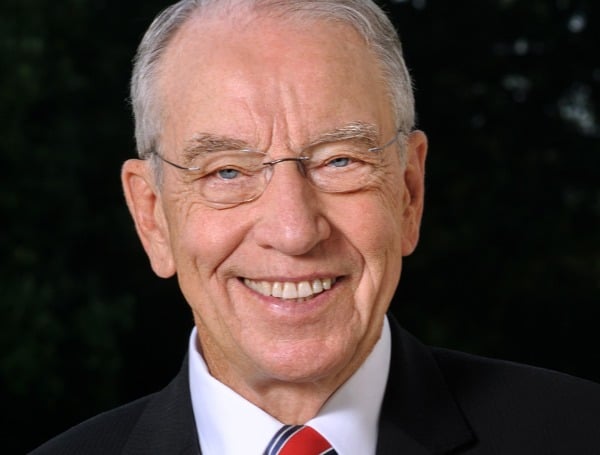By: Sen. Chuck Grassley
For generations, school kids went to bed dreaming about the possibility of a snow day. No one would have imagined today’s scenario. When winter storms blanketed the Midwest and moved to the East Coast, the bedtime prayers for millions of students asked higher powers that be to let them return to the classroom.
When the coronavirus pandemic first reached our shores, schools and businesses closed to help mitigate the spread. Science has taught us many things we didn’t know a year ago. For example, public health officials first suggested mask-wearing by members of the general public wasn’t necessary. Obviously, public health guidelines have evolved as the science tracks and determines what works and what doesn’t.
After shutting down in-person instruction last March, classrooms across America started the school year last fall with a mix of options, from hybrid to virtual-only, and in-person instruction. Uncertainty created hardship for parents working to balance their paying jobs while juggling hybrid or virtual learning schedules for their kids at home.
With the right precautions, opening schools is safe
On Friday, the Centers for Disease Control and Prevention (CDC) affirmed that with proper protocols in place, in-person instruction is safe for students, teachers and school personnel to return to the classroom. It reported the data show transmission can be minimized with social distancing and mask compliance.
The CDC also said vaccinating teachers “should not be considered a condition for reopening schools for in-person instruction.” Despite Congress approving tens of billions of dollars to help schools re-open safely, public school districts from suburban Washington, D.C. to Chicago and Los Angeles have dragged their feet. Many schools still refuse to re-open the school house doors. In the meantime, the benefits of in-person schooling keep stacking up and stacking the deck against kids stuck at home.
A growing number of health and education professionals are joining the chorus of parents and students demanding a return to in-person instruction. Taking away this choice from students who want to learn in the classroom is unfair. Child welfare experts say keeping kids away from the school building harms developmental, emotional and mental health, especially for at-risk students.
Beyond academic and social development in the classroom and on the playground, schools are a hub for vital health, nutrition and social services for low-income and minority student populations. As the 11th month of the pandemic and second semester of the academic year gets underway, millions of school students are facing a preventable social divide. Keeping school buildings off-limits is creating a situation of haves and have-nots. Two decades ago, President George W. Bush prioritized academic achievement for all Americans, particularly those penalized by the “soft bigotry of low expectations.”
He worked across the aisle with the liberal lion of the Senate, Sen. Ted Kennedy, to ensure “no child is left behind.” Today, too many of America’s school children are getting left behind through no fault of their own. Some of the academic disruption caused by the pandemic is beyond anyone’s control. But in less than a year since the novel coronavirus shut down schools, COVID-19 vaccines are rolling out across the country.
Many educators, school officials and families have partnered and found a way to make the safe return to the classroom a reality, including in my home state. According to December statistics from the Iowa Department of Education, 96% of non-public schools offered full in-person instruction; 74% of public schools offered full in-person instruction with another 18% offering some in-person instruction.
When there’s a will, there’s a way. Don’t forget, millions of students live in areas with a digital divide. They don’t have access to resources for remote learning. And what’s worse, shutting out students on the margins, including those with disabilities, from classrooms and special education resources put them at even greater disadvantage with their peers. Other students who haven’t seen the inside of a classroom for nearly 12 months may be victim to undetected domestic abuse, neglect and emotional trauma from prolonged, unchecked classroom truancy.
Common sense to give families the choice of education
Iowa has taken a common sense step to give families a choice and a voice in their child’s education. The drumbeat for in-person instruction was heard loud and clear in Des Moines. Iowa Gov. Kim Reynolds and the Republican-led State Legislature listened. A new state law took effect Feb. 15 requiring all schools across the state to give parents the option to send their kids to in-person learning five days a week.
Keep in mind state law still allows remote learning as an option for every family, at the parents’ discretion. Parents hold the keys to their child’s education. If parents aren’t happy with the decisions of the local school board, they will start looking for other options, perhaps permanently. Some may open-enroll their kids in another district or choose private education. The pandemic has increased the demand for school choice among a growing number of parents.
Those who can’t afford private tuition will be pushing elected officials and policymakers to expand tuition help and tax incentives to send their student to the school that best fits their needs. That’s a kettle of fish big city union bosses may want to fully consider as they continue to bar the door to the school house.
There’s always a snowball’s chance they’ll listen to reason, especially if more parents say enough is enough.
